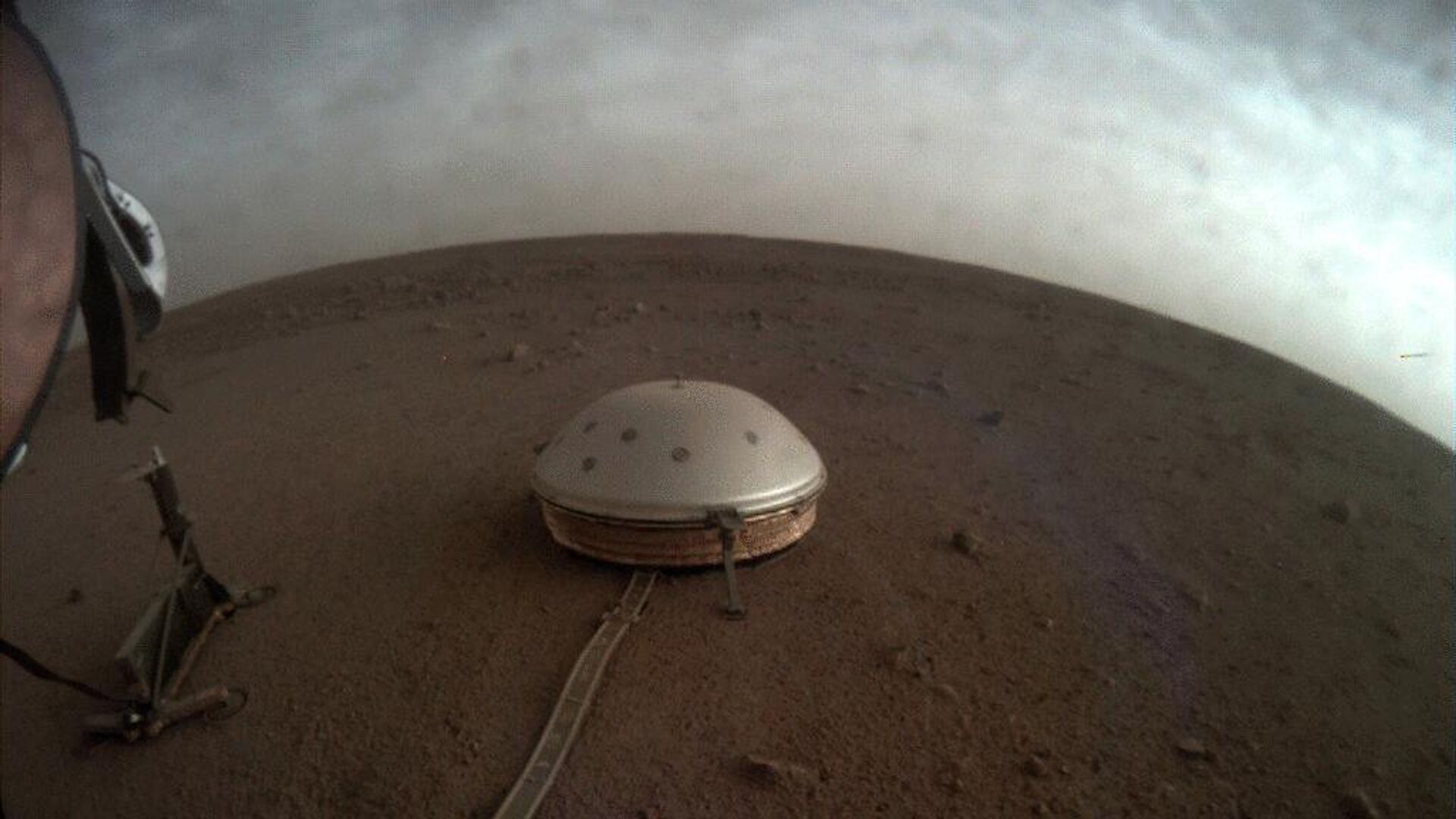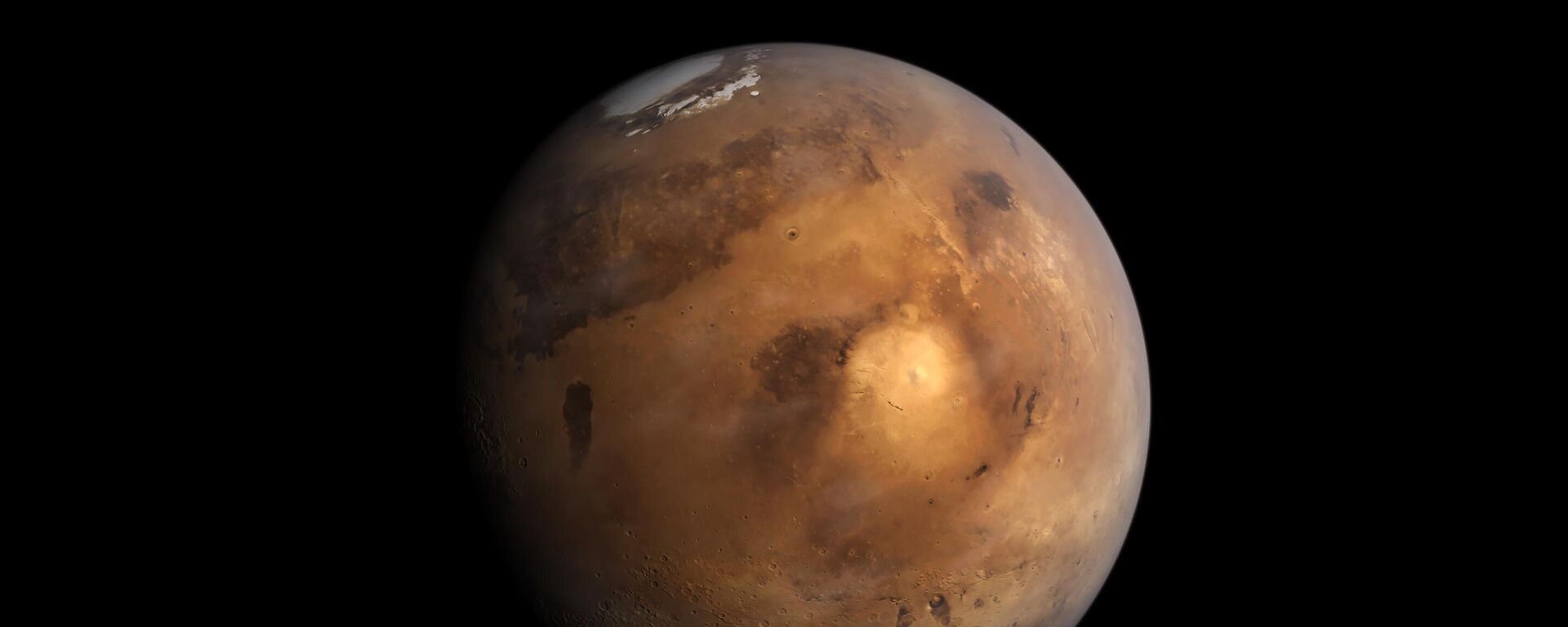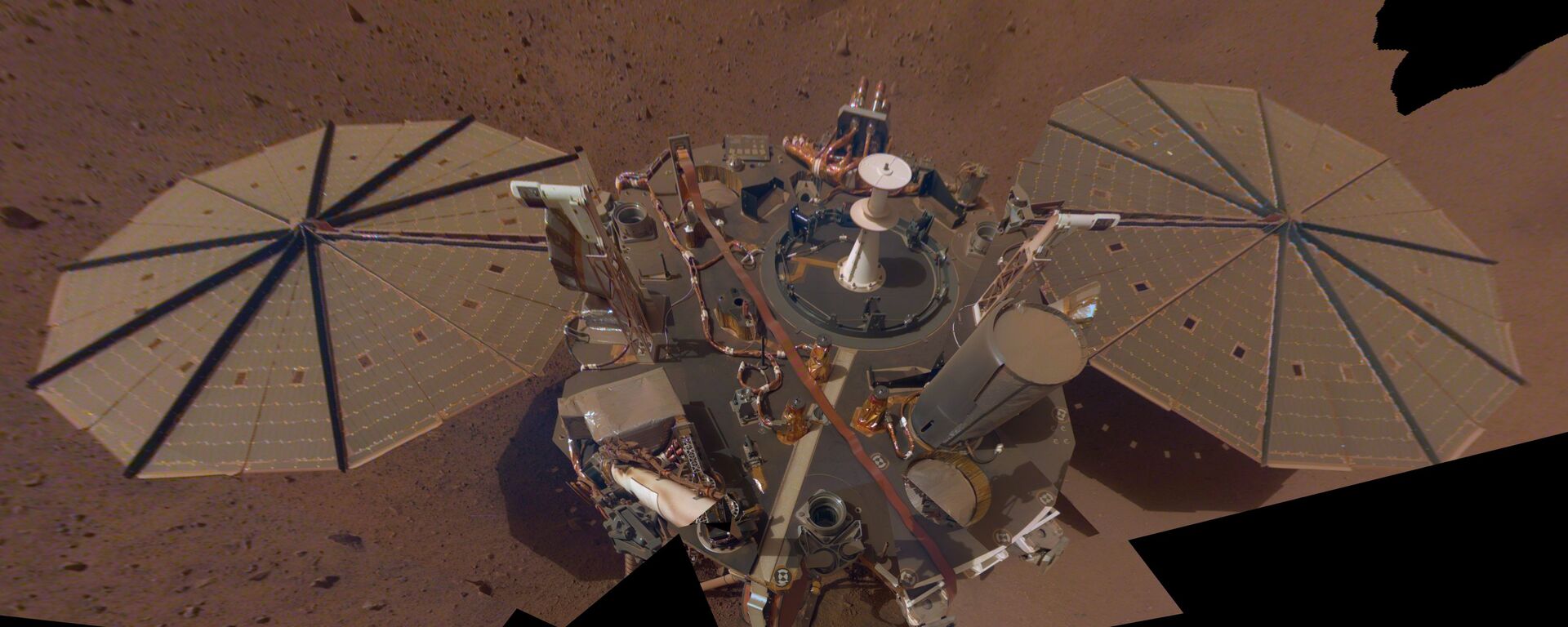https://sputnikglobe.com/20220510/nasas-rover-records-magnitude-5-quake-on-mars-strongest-ever-in-history-of-planets-study-1095413472.html
NASA's Rover Records Magnitude 5 Quake on Mars, Strongest Ever in History of Planet's Study
NASA's Rover Records Magnitude 5 Quake on Mars, Strongest Ever in History of Planet's Study
Sputnik International
Quakes occur on Mars as well, and it is thought that the Red Planet was once more seismically active. Yet even now, sensors are able to detect distortions... 10.05.2022, Sputnik International
2022-05-10T22:45+0000
2022-05-10T22:45+0000
2023-04-12T16:57+0000
science & tech
quake
nasa insight mission
rover
seismic activity
mars
space
https://cdn1.img.sputnikglobe.com/img/07e6/05/0a/1095414456_0:0:1024:576_1920x0_80_0_0_cc2d4d0e8efd15f943c48ff17f8c3f4e.jpg
NASA's InSight Mars lander has detected the strongest quake ever recorded on another planet, a magnitude 5 quake that struck on May 4, 2022, the mission's 1,222 Martian day, or sol, the agency said on Monday.According to a press release, this brings the total number of quakes detected by InSight to 1,313 since its arrival on Mars in November 2018. The greatest previously recorded quake was a magnitude 4.2 marsquake that occurred on August 25, 2021.NASA's InSight lander recorded the magnitude 4.2 quake as lasting over an hour and a half. It was also said to have five times the energy of the previous record holder, a magnitude 3.7 quake discovered in 2019.A magnitude 5 marsquake is not very strong by Earth standards, but it is close to the upper limit of what scientists expected to detect on Mars during the InSight mission, according to NASA's Jet Propulsion Laboratory. Notably, before being able to reveal specifics such as its position, the nature of its source, and what it might tell us about Mars' innards, the science team will need to investigate this new quake further.The quake strikes as InSight faces issues with its solar panels, which provide power to the expedition. As InSight's location on Mars approaches winter, the amount of dust in the air increases, lowering the amount of sunlight available. On May 7, 2022, the lander's available energy dipped slightly below the threshold that causes the spacecraft to enter safe mode, which disables all but the most vital systems. This reaction is meant to protect the lander, but it could happen again when the available power drops.To probe Mars' deep interior, InSight was equipped with a highly sensitive seismometer given by France's Centre National d'Études Spatiales (CNES). Seismologists can analyze how seismic waves change as they pass through or reflect off material in Mars' crust, mantle, and core to establish the depth and composition of these layers. Scientists can use what they discover about Mars' structure to better comprehend the genesis of all rocky worlds, including Earth and its Moon.NASA extended the mission to December 2022 after the lander completed its primary mission at the end of 2020, achieving its original science objectives.
https://sputnikglobe.com/20220424/scientists-record-two-biggest-to-date-quakes-on-mars-most-powerful-since-observation-began-1095002229.html
https://sputnikglobe.com/20210723/photos-nasa-insight-reveals-mars-crust-mantle--molten-core-1083443376.html
mars
Sputnik International
feedback@sputniknews.com
+74956456601
MIA „Rossiya Segodnya“
2022
News
en_EN
Sputnik International
feedback@sputniknews.com
+74956456601
MIA „Rossiya Segodnya“
Sputnik International
feedback@sputniknews.com
+74956456601
MIA „Rossiya Segodnya“
science & tech, quake, nasa insight mission, rover, seismic activity, mars, space
science & tech, quake, nasa insight mission, rover, seismic activity, mars, space
NASA's Rover Records Magnitude 5 Quake on Mars, Strongest Ever in History of Planet's Study
22:45 GMT 10.05.2022 (Updated: 16:57 GMT 12.04.2023) Kirill Kurevlev
Managing Editor
Quakes occur on Mars as well, and it is thought that the Red Planet was once more seismically active. Yet even now, sensors are able to detect distortions typical of a marsquake, albeit they are usually minor in comparison to most earthquakes.
NASA's InSight Mars lander has detected the strongest quake ever recorded on another planet, a magnitude 5 quake that struck on May 4, 2022, the mission's 1,222 Martian day, or sol, the agency
said on Monday.
According to a press release, this brings the total number of quakes
detected by InSight to 1,313 since its arrival on Mars in November 2018. The greatest previously recorded quake was a magnitude 4.2 marsquake that
occurred on August 25, 2021.
NASA's InSight lander recorded the magnitude 4.2 quake as lasting over an hour and a half. It was also said to have five times the energy of the previous record holder, a magnitude 3.7 quake discovered in 2019.
A magnitude 5 marsquake is not very strong by Earth standards, but it is close to the upper limit of what scientists expected to detect on Mars during the InSight mission, according to NASA's Jet Propulsion Laboratory. Notably, before being able to reveal specifics such as its position, the nature of its source, and what it might tell us about Mars' innards, the science team will need to investigate this new quake further.
"Since we set our seismometer down in December 2018, we’ve been waiting for ‘the big one,’” Bruce Banerdt, InSight’s principal investigator at NASA’s JPL, is quoted as saying. "This quake is sure to provide a view into the planet like no other. Scientists will be analyzing this data to learn new things about Mars for years to come."
The quake strikes as InSight
faces issues with its solar panels, which provide power to the expedition. As InSight's location on Mars approaches winter, the amount of dust in the air increases, lowering the amount of sunlight available.
On May 7, 2022, the lander's available energy dipped slightly below the threshold that causes the spacecraft to enter safe mode, which disables all but the most vital systems. This reaction is meant to protect the lander, but it could happen again when the available power drops.
To probe Mars' deep interior, InSight was equipped with a highly sensitive seismometer given by France's Centre National d'Études Spatiales (CNES).
Seismologists can analyze how
seismic waves change as they pass through or reflect off material in Mars' crust, mantle, and core to establish the depth and composition of these layers. Scientists can use what they discover about Mars' structure to
better comprehend the genesis of all rocky worlds, including Earth and its Moon.
NASA extended the mission to December 2022 after the lander
completed its primary mission at the end of 2020, achieving its original science objectives.



